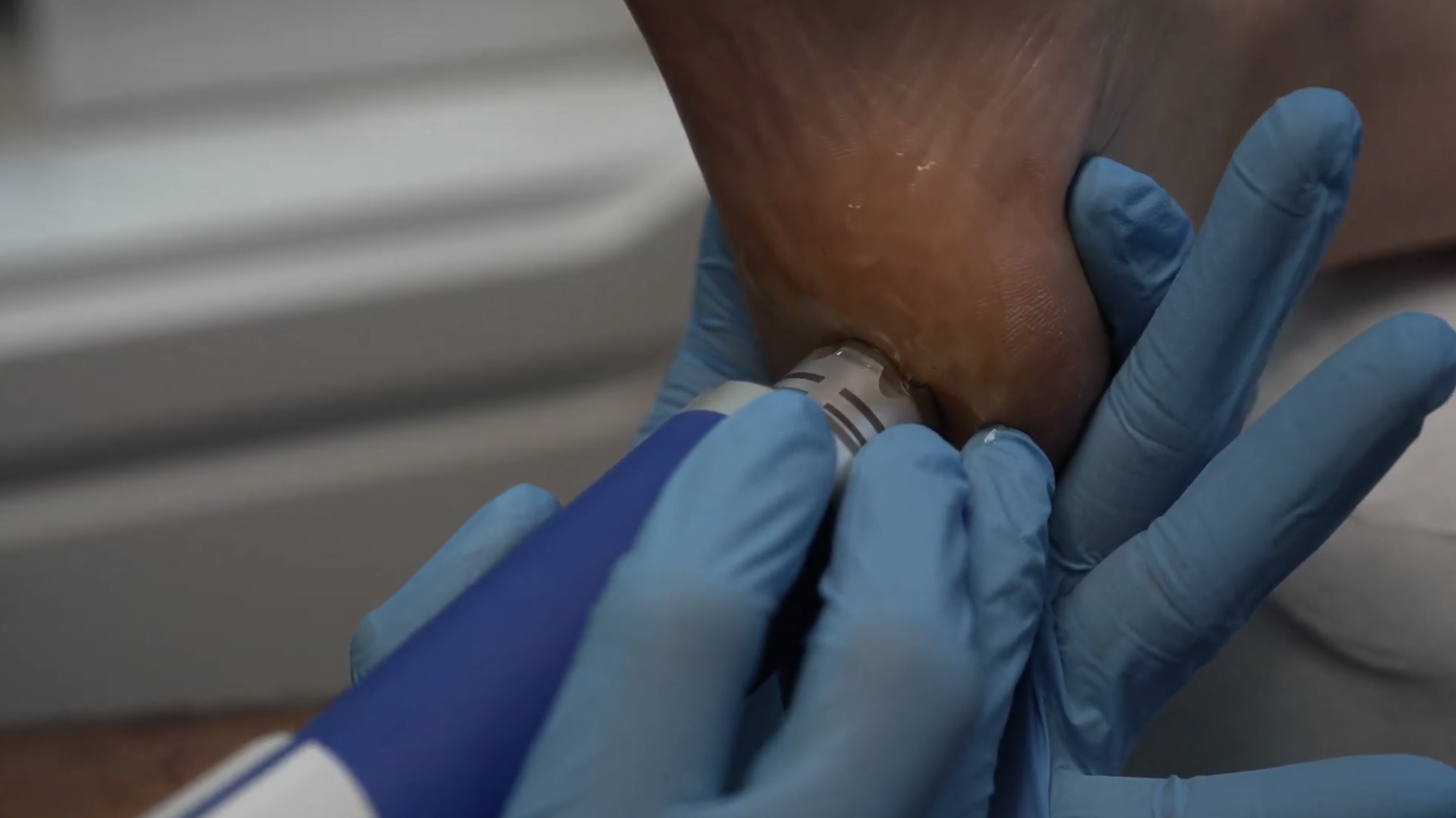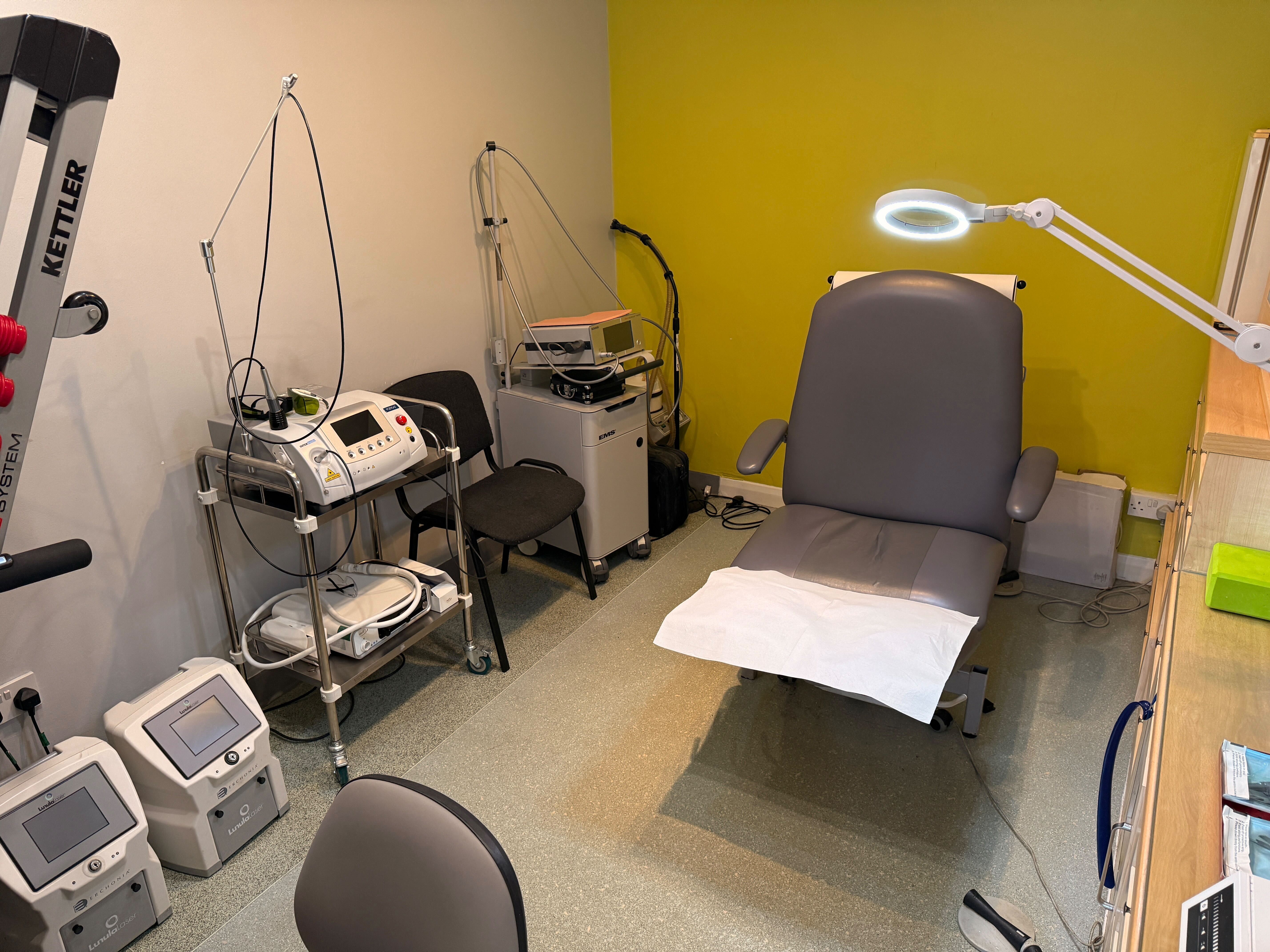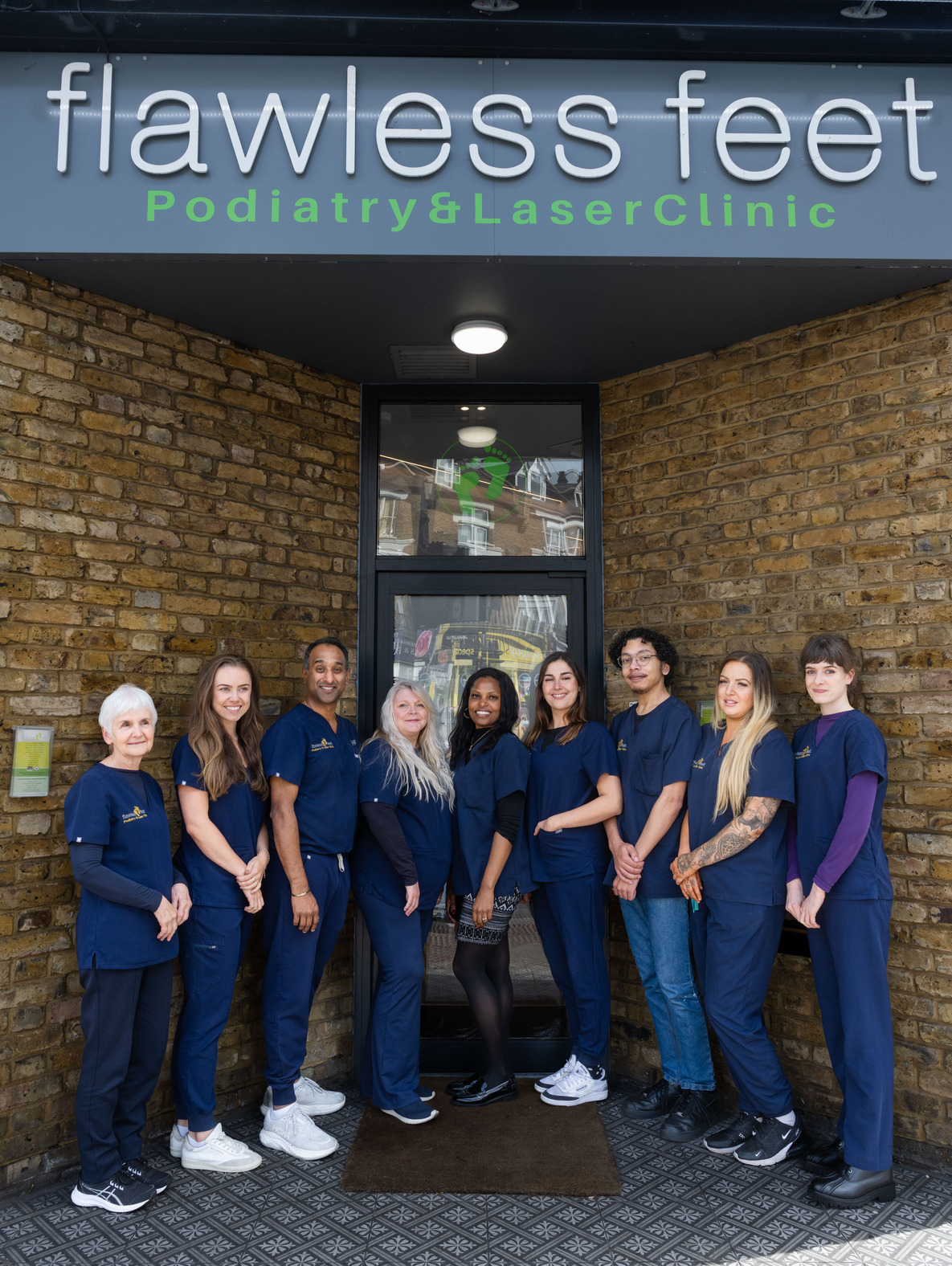Plantar Fasciitis: Causes, Symptoms & Treatments
Plantar Fasciitis is one of the most common causes of heel pain, affecting people from all walks of life—whether you're active, on your feet all day, or simply dealing with the effects of aging or footwear.
At Flawless Feet Podiatry & Laser Clinic, our podiatrists and chiropodists in London specialize
in diagnosing and treating plantar fasciitis with proven, non-invasive therapies tailored to your unique needs.


What Is Plantar Fasciitis?
The term Plantar Fasciitis literally means inflammation of the plantar fascia—a thick, fibrous band of connective tissue running along the bottom of your foot, connecting your heel bone to your toes.
Its role is crucial in maintaining the arch of your foot and absorbing impact during movement.
When this band is overstretched or strained, tiny micro-tears can form, causing pain, swelling, and inflammation. The condition is especially common among runners, people who stand for long hours, and those with poor foot mechanics.
What Causes Plantar Fasciitis?
Plantar fasciitis is typically the result of repetitive stress and strain. Here are some of the most common causes and contributing risk factors:
-
Overuse from running, walking, or prolonged standing
-
Sudden weight gain, including pregnancy
-
Aging, which causes ligaments to tighten and muscles to weaken
-
Unsupportive footwear or walking barefoot on hard surfaces
-
Flat feet or over-pronation, where the arch collapses and adds strain
- Tight calf muscles that limit ankle mobility and strain the fascia


Plantar Fasciitis Symptoms
You might be suffering from plantar fasciitis if you notice the following symptoms:
-
Heel pain first thing in the morning or after long periods of rest
-
Pain that eases with movement but returns after prolonged activity
-
Limping or altered walking pattern due to discomfort
-
Dull ache or sharp, stabbing pain under the heel
-
Tightness in the calves that returns quickly after stretching
- Swelling or mild redness at the base of the heel
In more chronic cases, the pain may radiate up the ankle or feel like a burning sensation.
How Is It Different From a Heel Spur?
Plantar fasciitis is often confused with a heel spur. While they’re related, they’re not the same.
A heel spur is a bony growth that can develop at the point where the fascia attaches to the heel bone, often in response to chronic tension. In many cases, both conditions co-exist, which is why expert diagnosis is key to effective treatment.


Treatment Options for Plantar Fasciitis at Flawless Feet
Our approach is designed to be non-invasive, effective, and personalised to each patient. Your treatment plan may include:
-
Foot Mobilisation Therapy to improve joint alignment and foot function
-
Custom Orthotics to correct poor biomechanics and offload pressure
-
Shockwave Therapy to accelerate healing and reduce inflammation
-
Stretching and Strengthening Exercises for the plantar fascia and calf
- Footwear Advice to ensure proper arch and heel support
During your first consultation, we’ll conduct a comprehensive biomechanical assessment to uncover the root cause and tailor your recovery plan.
Why Choose Flawless Feet Podiatry & Laser Clinic?
Our experienced team of podiatrists and chiropodists in London have helped thousands of patients recover from heel pain without surgery. We combine evidence-based therapies, advanced technology, and personalised care in convenient locations across London:
-
Sydenham Clinic – 30 Sydenham Road, SE26 5QF
-
Covent Garden Clinic – Jubilee Hall Gym, 30 The Piazza, WC2E 8BE
- Croydon Clinic – 197a Shirley Road (Entrance via Valley Walk), CR0 8SB
Don’t let heel pain slow you down. With the right care, plantar fasciitis is highly treatable. Our team at Flawless Feet is ready to help you regain pain-free movement and get back to doing what you love.







Frequently Asked Questions
No, most cases respond well to conservative treatment. Early intervention helps prevent chronic pain and long-term complications like heel spurs.
Custom orthotics are highly effective in correcting biomechanical issues, offloading pressure from the heel, and speeding up recovery.
Recovery time varies. Most patients improve within 6–8 weeks with regular treatment and home exercises. Chronic cases may take longer.
Shockwave Therapy is generally well-tolerated and provides long-term relief. Some patients feel slight discomfort during treatment, but it subsides quickly.
It depends on the severity. We may recommend modifying activities during treatment. Low-impact exercises like swimming are often a good alternative.
Book Your Podiatrist in London
Book your treatment at Flawless Feet Podiatry & Laser Clinic in London and experience expert care designed to relieve discomfort, restore movement, and get you back on your feet, comfortably.








